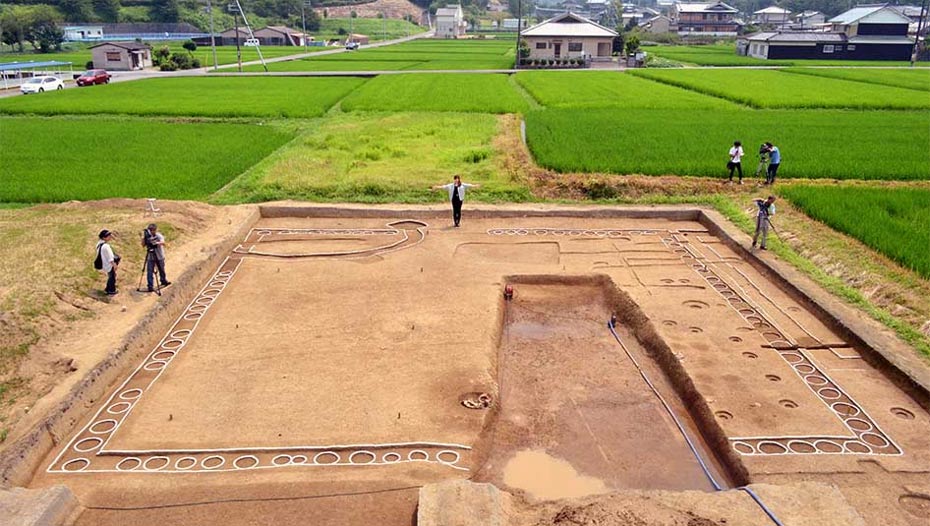1500 Year Old Korean Meeting Place Uncovered in Japan
Remains of an o-kabe style building have been excavated in Takatori, Nara prefecture, Japan. Evidence suggests that the building was used for meetings by foreigners. It has been dated to the 5th Century and is the largest of the approximately 40 ancient o-kabe remnants found in the area.
With each side measuring 13.5 meter (44.3 feet), the latest o-kabe (large-wall) structure is the largest of its kind excavated thus far in Takatori, according to The Asahi Shimbun. Poles 20 centimeters (7.9 inches) in diameter were built into a 50 centimeters (19.7 inches) wide and 35 centimeters (13.8 inches) deep ditch at 50 centimeter (19.7 inch) intervals. The walls were believed to be built from the poles being covered in mud and then painted.
Archaeologists have stated that the o-kabe was built using a construction method introduced from the Korean Peninsula. With other o-kabe already found, archaeologists have had little difficulty in suggesting the use of this particular structure. Specifically they have asserted that the building served as a meeting spot for migrants from the Korean Peninsula and China.
- The mysterious monoliths of Asuka Nara and the Rock Ship of Masuda
- Kitora Tomb Star Chart is Declared the Oldest in the World
- Moat ruins found in Japan may be part of a burial mound for an ancient emperor
- Ancient Japanese Queen Himiko may have burned animal bones to tell the future
“I believe the structure served as part of a settlement of foreigners, who settled in Japan and introduced document administration and foreign policy,” Kanekatsu Inokuma, professor emeritus of archaeology at Kyoto Tachibana University, said in a statement.

Artist's rendition of the "o-kabe" style structure (Takatori town board of education)
The supposed fire port and smoke pipe of an ondol (Korean method of floor heating), further support the claims for foreign use of the site.
Due to the number of similar o-kabe already discovered in the area, the area is thought to have been a settlement of the Yamato no Ayauji clan, a group of immigrants from the Korean Peninsula.
The Nihon Shoki (The Chronicles of Japan) compiled in 720 AD, shows that foreigners were present in the region. It describes two migrant officials serving Emperor Yuryaku in the late 5th century, Musano Suguri Ao and Hinokuma no Tami no Tsukai Hakatoko. The Nihon Shoki explains that they went to Wu in ancient China and brought back other wise men with them.
Featured Image: Remnants of an "o-kabe" structure in Takatori, Nara Prefecture, Japan. The white holes surrounding the square are where poles had been placed. (Kazuto Tsukamoto)

















